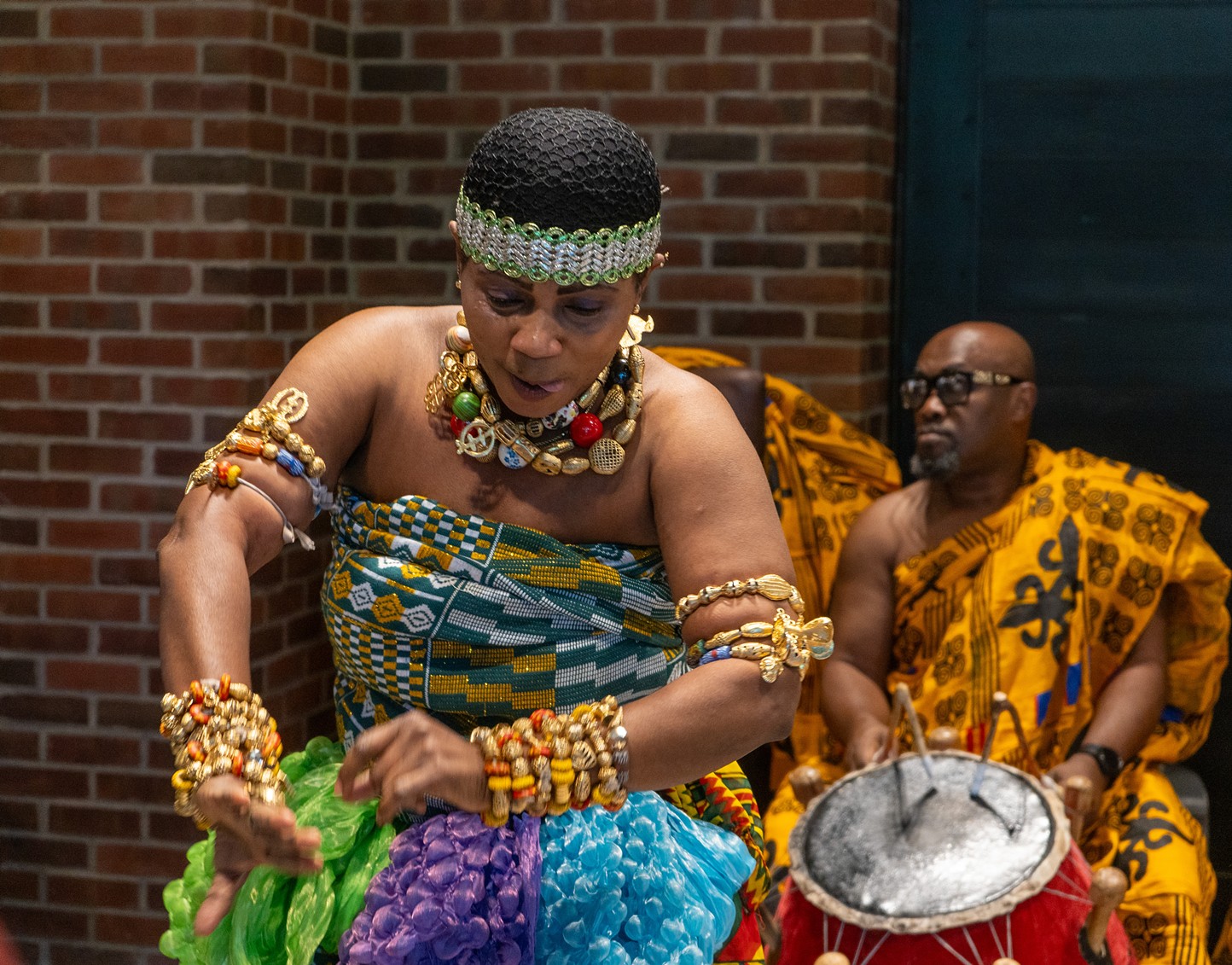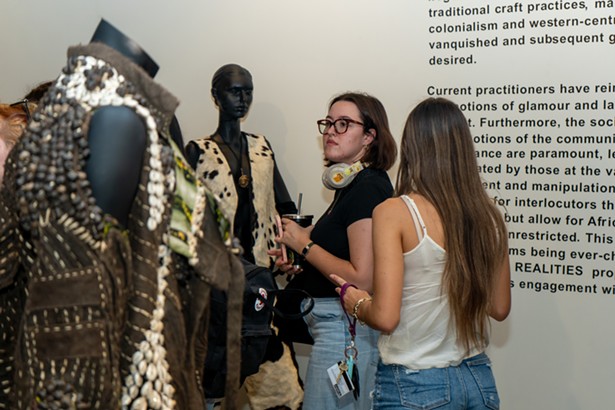Fashion
African Fashion Platform Guzangs Brings “Alternative Realities” to Marist College

Through November 15, Marist College showcases the diverse fashion of Africa in “Alternative Realities: Modern and Contemporary African Fashion, a View from the Continent.” The exhibit is one of the many projects from Guzangs, the global and interactive platform celebrating African art and fashion.
Kunda Nampasa, a Marist senior and an international student from Zambia, spent her summer interning with Guzangs, working on the exhibit under the direction of the curators, Guzang’s founder Idelle Taye and Nigerian designer Kelechi Odu, as well as Sonia Roy, Marist Fashion gallery director and fashion lecturer.
Napasa says “Alternative Realities” is a representation of Guzang’s mission. “They are there to foster connections between fashion enthusiasts, creators, and everyone else that supports African fashion and wants to see it grow and succeed through its different showcasing of heritage and contemporary styles,” she says.
Guzangs works with museums and galleries to curate fashion shows and exhibits. They also promote African brands and designers at international fashion weeks and conferences.
photo courtesy Benson Delaney/Marist College
“Alternative Realities” is the first exhibit at Marist featuring exclusively African Designers.
“Alternative Realities” includes 45 pieces of garments, accessories, textiles, sculpture, and jewelry from 14 acclaimed designers from across Africa. The work includes that of Adeju Thompson, a Yoruba designer who garnered the 2023 International Woolmark Prize and recognition from both Vogue 100 and BoF 500. Niyi Okuboyejo is a Nigerian Designer who founded the “Post Imperial” brand was also the 2020 FGI Rising Star Award in menswear recipient. The work gives the Marist community an opportunity to interact with African art through the lens of fashion.
Roy believes the exhibit challenges the preconceived notions of Africa that Western society holds. “The students are exposing them to a different reality than what they might see of Africa, whether it’s on social media or on television,” Roy says. “They think Africa is a monolith and all they know about it is what they think they’ve seen in movies or in history.”
Guzangs collections have an emphasis on sustainable fashion. The garments are made from recycled fabrics, natural dyes, and raw materials. “Alternative Realities” explores the possibilities of fashion beyond the status quo of Western fashion companies. One of the centerpieces of the exhibit is a garment made entirely from bark cloth. Another is a dress made from recycled jeans. Both of these garments are made by IGC Fashion, a Ugandan brand. “I think this show in particular is a good opportunity for us to see materials that other people may look down on being used in a way that elevates fashion in a high end way. It is doable,” Roy says.
According to Roy, the sheer volume of clothes produced is the reason why fashion is so unsustainable in the US. “Fresh eyes are what we need to reevaluate, not just our use of fashion, or our relationship with fashion, but our relationship with the materials of fashion, the raw materials,” she says.
“Alternative Realities” is the first exhibit at Marist made up exclusively of all African-designed pieces. “I think sometimes you forget that there are African students on campus and there are African people in the community around us and I think it’s important for them to be able to walk into a gallery and see something that represents them,” Roy says.
Nampasa believes in the importance of showcasing underrepresented designers at institutions like Marist. “It creates inclusion, which I feel is essential to just being human. It creates a sense of one community. They’re able to learn something new about a new culture or a new place, or just the people in general,” she says.










